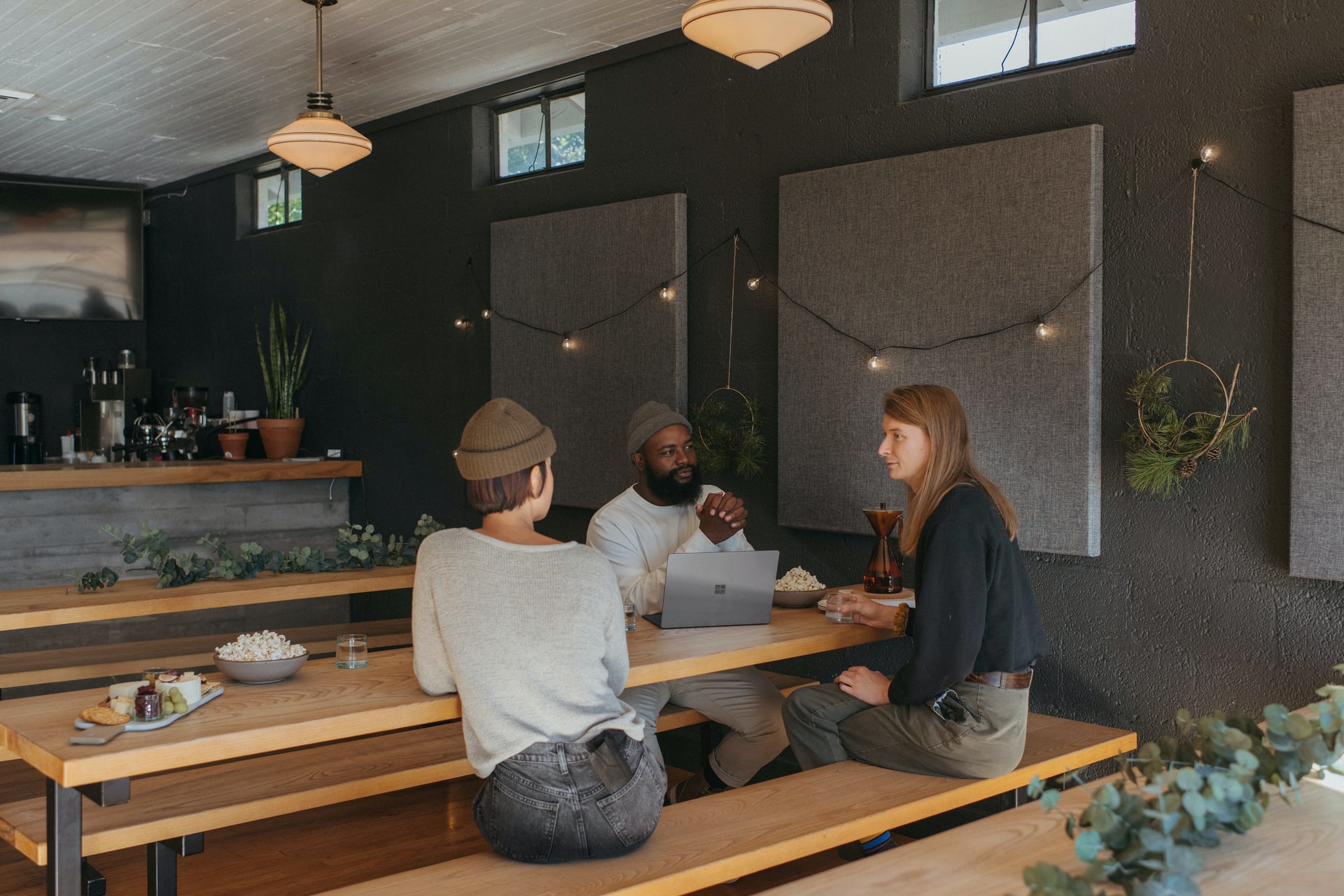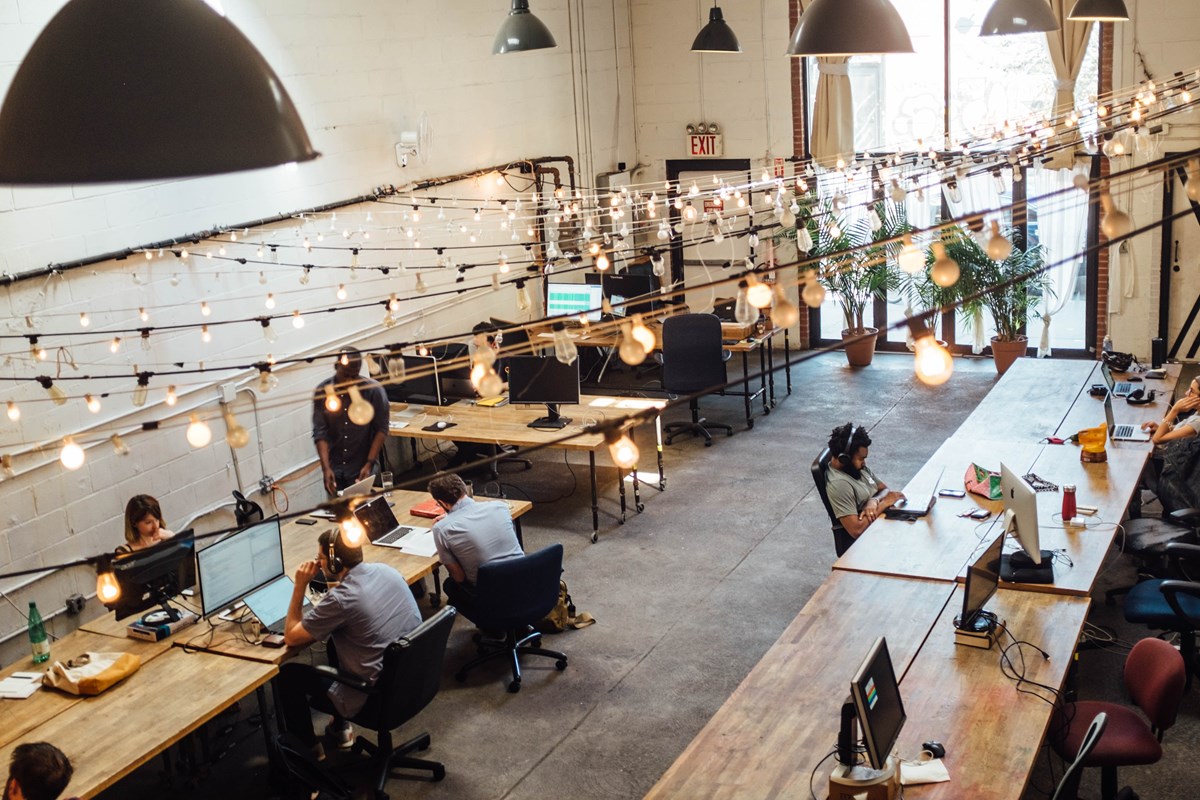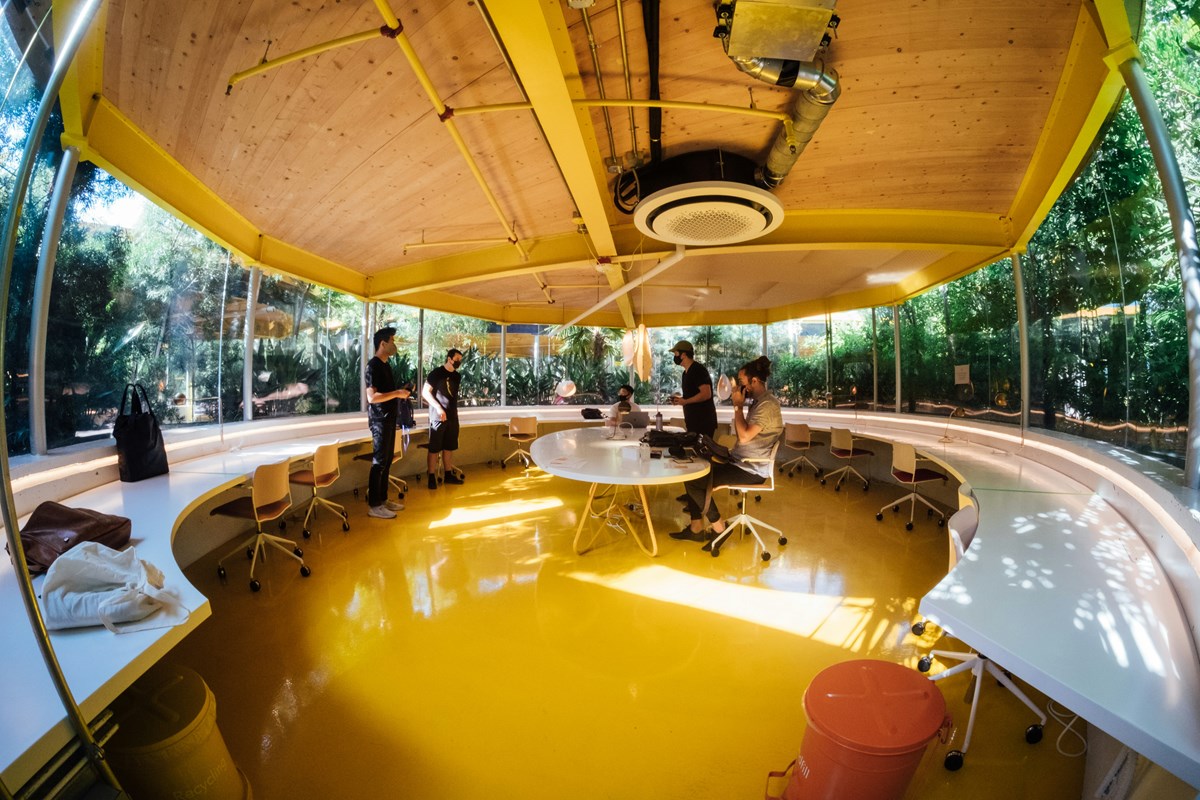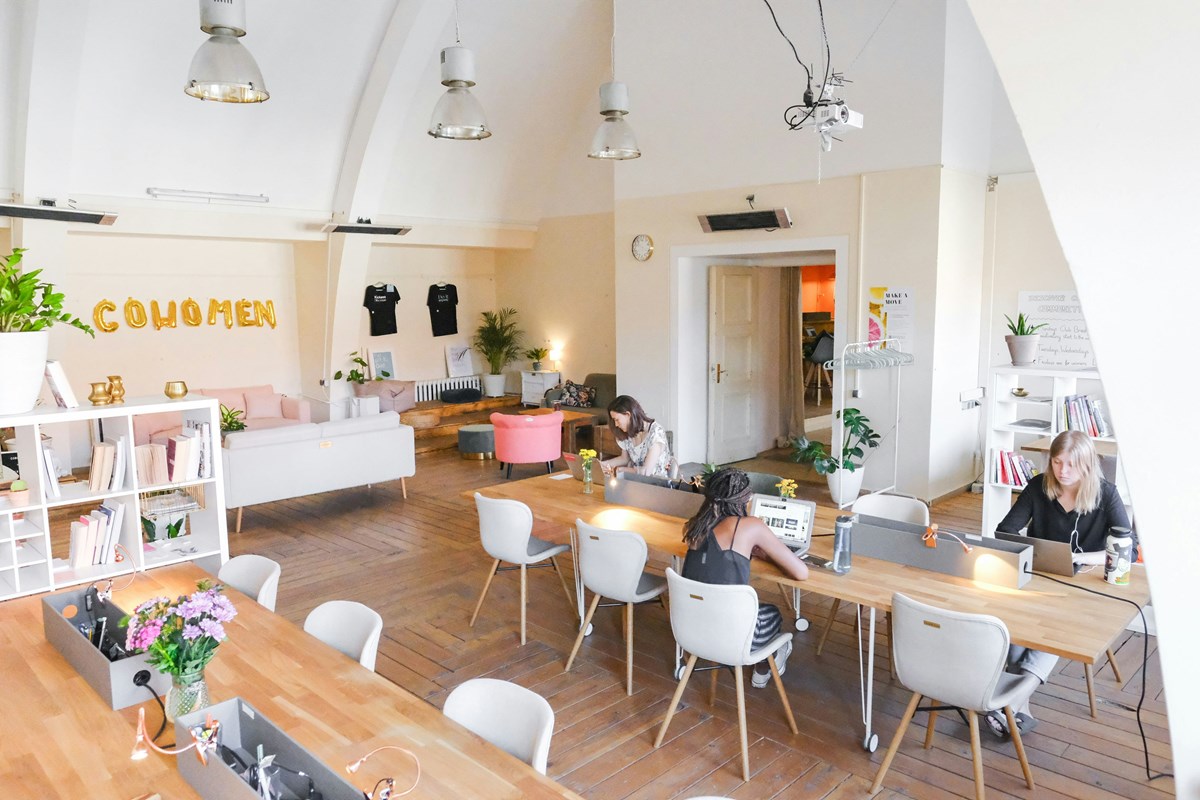- Community
10 Striking Statistics About the Coworking Sector

Coworking has come a long way since its humble beginnings. Today, it’s a key part of the office landscape, and the latest statistics show the sector is growing, evolving, and here to stay.
From lease trends to corporate uptake, the numbers reveal why coworking is increasingly a mainstream workspace solution. Let’s look at 10 striking statistics that back this up.
1. Coworking growth reaches an all-time high
The good news: coworking is on the rise. At the end of last year, the number of coworking spaces worldwide reached the 42,000 mark, reflecting our predictions back in 2021 that there would be over 40,000 coworking spaces by 2024.
Around 3,000 of that number are located across the UK and Ireland, with London identified as the ‘hottest’ flexible workspace market globally for 2024. At the end of H1 2024, for example, requests for London flex space increased 14% year-on-year.
Regional markets are growing, too. In terms of space, coworking and flex made up 839,000 sq ft of real estate in the UK at the end of Q3 2024, reaching the highest levels since pre-COVID (2019). In 2023, 300,000 sq m of flex stock was added to the European market, making up around 2.5% of total office stock.
In the first half of 2024, market demand in the US was up by 13% since the year before. By Q3 2024, the US coworking sector accounted for 127.7 million sq ft of workspace. The largest markets were located in Manhattan, Los Angeles, and Chicago, while Miami and Washington were identified as growth markets, but with low supply. Coworking operators looking for the advantage might do well to look at similar high-demand, low-supply markets.
2. Corporations continue to lease flexible workspace
In recent years, the term “coworking” has been used interchangeably with flexible workspaces and serviced offices. In some flex spaces, coworking is delivered as a hot desk product or used to describe an open-plan workspace. Whichever way you view coworking, corporations have certainly embraced the benefits of flex, including shorter-lease terms and shared fit-out investment to flex up or down, bringing coworking to the mainstream.
Back in 2020, 86% of US firms shared that they would embrace flex space and coworking as part of their long-term real estate strategies, with the sector expected to grow by over 21% the following year. Now, predictions stand that over the next five years, 30% of office space is expected to be flexible.
As such, landlords are understanding the need to transform their portfolios to flex. For instance, landlords in UK regional cities have created their own high-quality flex products, delivering them at a lower cost than flex operators. This trend is expected to continue.
3. Lease lengths increase
In 2021, we noted that flexibility was expected to increase in office leases: 25% of occupiers expected more flexible workspace agreements, while 44.5% wanted greater flexibility built into traditional leases. This is still the case, driven by growing economic uncertainty and rising business costs.
While traditional lease lengths are shortening in Europe (as occupiers seek flexible workspaces as a solution), UK flex lease lengths have increased, reaching a post-pandemic high this year.
The average flex office agreement in London is at 22 months. Thanks to growing corporate uptake, companies have moved beyond “experimenting” with hybrid work and now have better clarity on headcount and usage patterns, enabling longer planning horizons and lease security.
These longer lease commitments create an opportunity for landlords to implement management agreements with workspace operators. Over the next 12 months, it’s expected that around 12% of investors will seek to increase their exposure to the flex market through management agreements.
4. Return to office continues
Hybrid work has decelerated this year, with only 77% of organisations maintaining hybrid programmes, a 10% drop from last year. Few companies plan to expand hybrid programmes over the next year.
Despite this, 55% of companies are expected to reduce office footprints in the mid-term, keeping up hot desk practices over the next two years to maximise space and save costs.
This could impact the smaller coworking spaces most significantly, which welcomed an increasing number of remote workers over the last few years. For instance, 20% of US corporate workers were working from a coworking space at least one day a week in 2021. As workers return to their HQ, they may not require a coworking membership at a smaller space or neighbourhood workspace near home moving forward.
This year has also seen a large number of corporate redundancies. Some people are turning to entrepreneurship and self-employment, finding coworking spaces to be the most productive workspaces to work from. Equally, many coworking spaces offer support for freelancers and small business owners, with workspaces in small towns operating with these goals in mind, acting as business hubs.
5. Millions of coworkers worldwide
Despite the challenges for smaller coworking spaces, the number of coworkers reached 5 million in Q4 2024. Coworking typically attracts a mix of freelancers, SMEs, startups, and remote workers who seek the autonomy, collaborative environments, and networking opportunities that coworking spaces provide.
Interestingly, the average coworking member is in their mid-thirties and a millennial – the highest generation using flex space workplaces (accounting for 61% of coworking members).
Most coworking spaces expect their member numbers to grow this year, despite facing challenges around member acquisition. Operators are increasingly leveraging community-building initiatives, value-added services, and enhanced amenities to attract and retain members.

6. Community and experience factors still matter
The flight to quality is increasing, as companies seek to invest in environments that support worker needs and retention.
Workspaces that directly benefit worker wellbeing can lead to:
- Engaged employees are 23% more profitable than their disengaged peers.
- 70% higher well-being levels were experienced by highly engaged teams.
- The cost of burnout for global businesses is an estimated $322 billion through turnover, absenteeism, and lost productivity.
Workspaces nowadays offer much more than just desks. Many offices now include well-being and fitness amenities, such as gyms and fitness studios, integrated alongside traditional work areas.
Similarly, coworking spaces are increasingly designed near or alongside these facilities, creating a more holistic and engaging environment for members.
Smaller, more independent coworking spaces also focus on the community aspect. By bringing people together who might otherwise work alone, coworking spaces can help people overcome feelings of isolation, with loneliness costing UK businesses £2.5 billion per year.
7. Emerging global markets
Which flex market is one of the fastest-growing globally? It’s the Asia-Pacific (APAC) market, with flexible space reaching 89 million sq ft in June 2024, up 3.9% from December 2023, now accounting for 4% of total office stock across 20 major markets.
Shaping the APAC market are:
- Sydney leads demand for flexible workspace, with more requests than any other city in the APAC region.
- Kuala Lumpur is one of the fastest-growing business hubs in the APAC region, experiencing a 78% year-over-year demand increase.
- Bangalore in India (otherwise known as India’s Silicon Valley) and Makati in the Philippines are ones to watch this year, too.
- The Indian market is expected to grow from 55 million sq ft to between 100-140 million sq ft by 2030.
Back in 2021, we predicted that 90% of Latin American coworking operators planned to expand that year, after experiencing a 230% growth in supply. By 2024, flexible workspace demand in this market had grown by 29%, mostly driven by a 163% year-on-year increase in Mexico City.
8. Private offices generate the highest revenue share in coworking
In the coworking industry, incorporating private offices as part of a diversified product mix can help generate more revenue.
At GCUC UK, it was shared that 90% of revenue in flexible workspaces came from private offices across the London coworking markets, with only 10% of revenue made by ancillary services (Workspace Intelligence Network).
The average cost of a private office desk in London is £805 per month, with prices surging 12% year-over-year. In the rest of the UK, it’s £379 on average. Globally, there’s a high demand for team offices and single-person offices, making urban operators best placed to deliver private offices.
9. Other coworking services
Meeting rooms have generally remained popular, with searches increasing 79% in the last year. Meanwhile, 91% of coworking operators are anticipating an increase in meeting room demand over the course of this year.
One benefit of return-to-office mandates and corporates encouraging in-person collaboration is that businesses with smaller office footprints can leverage flexible workspace meeting rooms for collaborative sessions, particularly those equipped with advanced AV solutions to support hybrid meetings.
Meanwhile, 73% of coworking spaces expect rising demand for event space. In fact, event spaces are particularly in demand in rural areas, where this space might be used by a local community group or organisation.
This suggests there are monetisable amenities beyond desk memberships, although demand for coworking desks is expected to increase 64% this year, and a huge 78% of US operators were set to increase desk rates in 2025, to cover rising costs for overheads, including operations, inflation, maintenance, and staffing.
10. Data is power
All the perks of coworking are enabled by technology, from day passes to hybrid memberships and amenities. Without tech, coworking spaces wouldn’t be able to operate so seamlessly or generate as much revenue.
With desk sharing being the norm in 61% of flex offices, using a workspace management system helps manage user experiences, while overseeing space utilisation metrics aligns with the need to match size requirements with user needs.
Meanwhile, understanding occupancy metrics is essential for workspace management. Those who gather this type of data gain massive advantages in space allocation and portfolio optimisation.
Around 88% of occupiers measure this data, increasing from 60% last year. It’s recommended that operators find solutions that integrate multiple data sources into a unified system to generate real-time insights.
The numbers tell the story: coworking is mainstream
The office isn’t dead, but it has evolved. With coworking and flexible workspace solutions offering the adaptability and services businesses and employees need, the sector is well-positioned for continued growth globally. These trends make it clear: coworking is here to stay, and its impact on the office landscape will only strengthen in the years ahead.
Want to know more about
how Nexudus could help your business?
We’re here to answer any questions you have.
Latest articles
-

- Community
- Coworking
- Coworking Resources
Enhancing the Experience: Lucy’s Guide to Coworking Satisfaction + Retention
As attitudes towards work continue to change and evolve, coworking and flex workspaces are perfectly placed to...
Lucy McInally on September 11, 2025 -

- Community
- Coworking
Build Stronger Community in the Workspace with the Four Ps
At the heart of the entire concept of coworking and what sets it apart from traditional offices,...
Kate Tattersfield on September 2, 2025 -

- Community
- Coworking
“Not Another Desk”: How to Sell Experiences, Not Space
Kate Tattersfield on June 25, 2025











